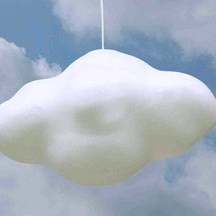
A Fog to Complement the Analytical Cloud
Cloud computing has fulfilled its promise to deliver on-demand computation to those in need with relative reliability, but as many have argued, it lacks mobility, streaming ability, wireless access and more. Indeed, the cloud was not built for any of these things. It was rather built to store a large amount of information and process it remotely.
 A paper from Cisco Systems outlines a possible solution: a complementary system called the Fog. Named simply after a cloud that hangs at ground level, the Fog would aim to essentially bring the cloud down to earth, making it more accessible to common users in common circumstances.
A paper from Cisco Systems outlines a possible solution: a complementary system called the Fog. Named simply after a cloud that hangs at ground level, the Fog would aim to essentially bring the cloud down to earth, making it more accessible to common users in common circumstances.
Incorporating the Fog, according to the paper, would bring the real-time analytics capabilities of the Cloud to things like Smart Grids and Smart Traffic Lights. “The smart traffic light node interacts locally with a number of sensors,” the paper says, explaining how a Smart Traffic System would work, “which detect the presence of pedestrians and bikers, and measures the distance and speed of approaching vehicles. It also interacts with neighboring lights to coordinate the green traffic wave. Based on this information the smart light sends warning signals to approaching vehicles, and even modifies its own cycle to prevent accidents.”
As implied above, it is not the goal of the Fog to replace the cloud. The paper finds many attributes of the Cloud rather valuable, particularly its centralized structure. However, they find that such centralization limits its geographical capabilities. “While Fog nodes provide localization, therefore enabling low latency and context awareness, the Cloud provides global centralization. Many applications require both Fog localization, and Cloud globalization, particularly for analytics and big data.”
The Fog would seek to play with the cloud in a multi-tiered approach. The first tier represents machine-to-machine interaction where data is processed and sent to the localized actuators. Higher tiers represent areas where, as a result of the Fog, humans interact and play with the data.
But of course, the human would not be able to play with the data without the Fog interacting with the cloud and allowing the cloud to analyze it. “We also note that the higher the tier, the wider the geographical coverage, and the longer the time scale. The ultimate, global coverage is provided by the cloud, which is used as repository for data that that has a permanence of months and years, and which is the bases for business intelligence analytics.”
It should be noted that this, for the most part, a purely hypothetical paper. It is a paper that sounds good on principle but lacks evidence that such a system would be feasible to build, as evidenced by the final paragraph which “welcomes collaborations on the substantial body of work ahead” on everything from architecture to applications.
Still, the Fog as described would be a perfect complement to the cloud. If it is feasible, it is a project that should be undertaken for the advancement of the accessibility of big data analytics.
Related Stories
Cisco Links Innovation to Analytics Automation
Six Super-Scale Hadoop Deployments
Chips, Stats & Stones: A Morning with SAS CEO Dr. Jim Goodnight



























